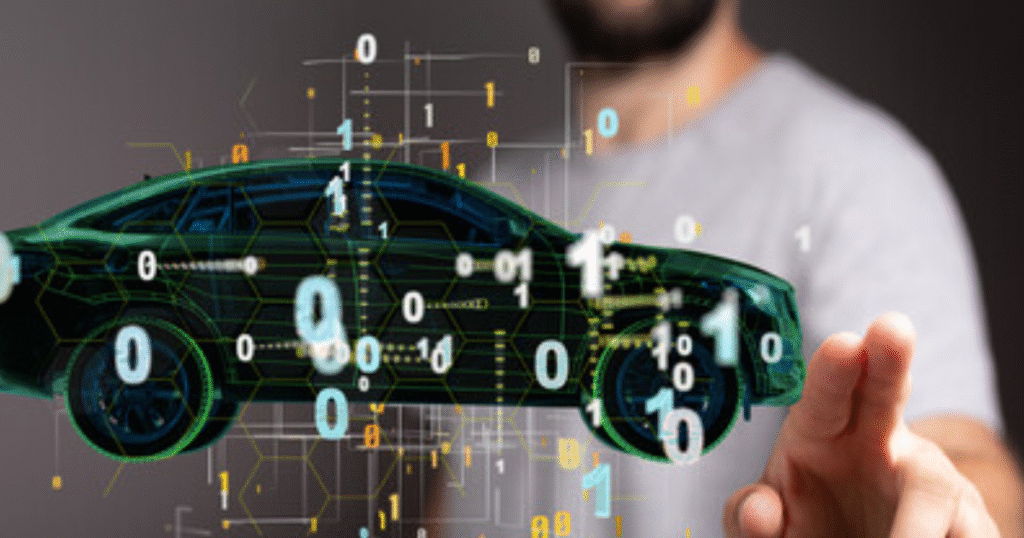Elon Musk’s Vision: AI, SpaceX, Tesla, and the Future of Innovation

Elon Musk is a name synonymous with groundbreaking innovation, disruption, and ambitious dreams that push the boundaries of technology. Whether it’s artificial intelligence, space exploration, or electric vehicles, Musk continues to revolutionize industries that shape the future. In this blog, we’ll explore his vision for AI, SpaceX, Tesla, and how he’s redefining the future of innovation. Elon Musk’s Influence on Artificial Intelligence Artificial intelligence (AI) is one of the most transformative technologies of our time, and Musk has been at the forefront of AI advancements. While he has expressed concerns about the potential risks of AI, he is actively involved in its development through xAI, the company behind Grok AI. Grok, an AI chatbot integrated into X (formerly Twitter), is designed to offer real-time, engaging, and insightful responses, competing with OpenAI’s ChatGPT. Musk envisions AI as a tool that should be transparent, decentralized, and aligned with human values. His involvement in AI aims to create safe yet powerful AI systems that can enhance productivity, innovation, and problem-solving while ensuring they don’t pose existential risks to humanity. Moreover, Musk has long advocated for regulations and safety measures in AI development to prevent uncontrolled growth that could lead to catastrophic consequences. His belief that AI should benefit humanity rather than become a threat has been a driving force behind his investments and initiatives in the sector. SpaceX: Making Interplanetary Travel a Reality Musk’s ambition isn’t limited to Earth. Through SpaceX, he aims to make life multi-planetary. His ultimate goal? A self-sustaining human colony on Mars. With groundbreaking projects like Starship, the most powerful rocket ever built, and the Starlink satellite network, SpaceX is transforming the space industry. Starship is designed for deep space exploration and could potentially carry humans to Mars within the next decade. The mission to Mars is not just a dream; it is a carefully planned vision that includes creating a habitat capable of supporting human life, utilizing Martian resources, and developing technologies that can sustain prolonged space travel. Meanwhile, Starlink, SpaceX’s satellite constellation, is revolutionizing global internet access. By providing high-speed, low-latency internet to even the most remote regions, Musk’s vision of a connected world is rapidly becoming a reality. This technology not only benefits individuals but also enhances connectivity for businesses, education, and emergency response teams worldwide. SpaceX’s innovation is not only about space travel but also about making it affordable, sustainable, and reusable, ensuring that humanity can expand beyond Earth without astronomical costs. Tesla’s Role in the Future of Sustainable Transportation Tesla has already reshaped the automotive industry, making electric vehicles (EVs) mainstream. Musk’s vision for Tesla extends beyond just cars; he aims to create an entire ecosystem of sustainable energy solutions, including solar panels, battery storage, and AI-driven automation. With models like the Cybertruck, Model S, and Model X, Tesla is pushing the limits of EV technology with longer battery life, faster charging, and AI-powered autonomous driving. Musk’s Full Self-Driving (FSD) software is expected to revolutionize the way we commute, making transportation safer, more efficient, and environmentally friendly. Additionally, Tesla’s advancements in robotics and AI, such as the Tesla Bot (Optimus), suggest that Musk’s vision extends beyond cars—he envisions a world where AI-powered robots handle mundane tasks, allowing humans to focus on creativity and innovation. Musk has also emphasized the importance of battery technology and sustainable energy solutions to drive the future of transportation. Tesla’s Gigafactories, strategically located around the world, aim to increase battery production capacity, reduce costs, and make EVs more accessible to the masses. The integration of solar energy and home battery storage with Tesla’s Powerwall further highlights Musk’s commitment to creating a greener planet. For a deeper dive into the future of autonomous vehicles, check out our article: The Future of Autonomous Vehicles: Are We Ready to Let Go of the Wheel? Neuralink and The Boring Company: Musk’s Other Revolutionary Ventures Beyond AI, space, and EVs, Musk is also making strides in neurotechnology and infrastructure. Neuralink, his brain-computer interface startup, aims to connect human brains directly with computers. This could help people with neurological disorders regain lost functions and even enhance human cognition in the future. If successful, Neuralink has the potential to merge humans with AI, bridging the gap between biological and artificial intelligence. On the other hand, The Boring Company focuses on solving urban congestion through underground tunnel systems. Musk’s Hyperloop concept, a high-speed transportation system, could revolutionize public transport, reducing travel times drastically and making commuting more efficient. How Elon Musk is Redefining the Future of Innovation Musk’s companies don’t just innovate; they disrupt industries and set new standards for the future. His approach follows a few key principles: Final Thoughts Elon Musk’s vision isn’t just about technology—it’s about reshaping the future of humanity. Whether through AI, space exploration, or sustainable energy, he continues to push boundaries, inspiring millions worldwide. His impact on innovation is undeniable, and as he continues to develop futuristic solutions, we can only imagine what’s next. Musk’s ability to combine technological advancements with long-term strategic vision sets him apart from traditional entrepreneurs. He not only thinks big but also executes at a scale that few can match. His efforts in AI, space travel, and sustainable energy will likely define the next era of technological progress. What do you think about Musk’s vision? Do you see AI, Tesla, and SpaceX transforming our future? Share your thoughts in the comments below! Final Thoughts Elon Musk’s vision isn’t just about technology—it’s about reshaping the future of humanity. Whether through AI, space exploration, or sustainable energy, he continues to push boundaries, inspiring millions worldwide. His impact on innovation is undeniable, and as he continues to develop futuristic solutions, we can only imagine what’s next. Musk’s ability to combine technological advancements with long-term strategic vision sets him apart from traditional entrepreneurs. He not only thinks big but also executes at a scale that few can match. His efforts in AI, space travel, and sustainable energy will likely define the next era of technological progress. What do you think
The Future of Autonomous Vehicles in the U.S : Are We Ready to Let Go of the Wheel?

Hey there, road warriors and tech fans! Welcome back to the blog—the kind you read, not watch. Today, we’re diving into a topic that’s revving up fast: the future of autonomous vehicles in the U.S. Self-driving cars have zoomed out of sci-fi and onto our streets, from busy city grids to quiet suburban lanes. But where’s this tech taking us, and are we ready to let machines grab the wheel? Let’s hit the road and find out. The Road So Far: Autonomous Vehicles Today The race for self-driving tech is full throttle, with Tesla, Waymo, and GM’s Cruise leading the charge. Tesla’s Full Self-Driving (FSD) system gets sharper with every update, edging closer to hands-free travel. Waymo’s driverless taxis are already cruising cities like Phoenix and San Francisco, piling up millions of autonomous miles. The National Highway Traffic Safety Administration (NHTSA) counts over 1,400 self-driving vehicles registered nationwide—a robotic road revolution in the making! It’s not all clear highways, though. We’ve all seen those viral clips: self-driving cars stalling at stop signs or thrown off by stray traffic cones. The tech’s still working out its bugs, and plenty of us humans still love the thrill of steering ourselves. So, what’s the next stretch of this journey? Why Autonomous Vehicles Could Shift Everything Self-driving cars could overhaul how we live and move. Here’s the breakdown: Sounds like a dream ride, right? Not so fast—there’s some rough terrain ahead. The Bumps in the Road Autonomous vehicles face real challenges: What’s Driving the Future? So, where’s this all headed? Here’s my take: Are We Ready to Let Go? Can we trust these machines with our lives? I’ve heard from Waymo riders—some find it thrilling, others miss the human vibe. I’d hop in for a quick city spin, but a stormy mountain road? I’m keeping control. The data’s got promise, though. The Insurance Institute for Highway Safety says autonomous tech could cut traffic deaths significantly—thousands of lives saved if it clicks. But it’ll take tech fixes, public buy-in, and proof it can handle real-world chaos. The Road Ahead The future of autonomous vehicles in the U.S. is like a cross-country trip with a sketchy GPS—exciting, but the route’s unclear. Safer roads, cleaner air, and more free time are up for grabs—if we dodge the potholes. Whether you’re a gearhead or just hate traffic, the car world’s shifting gears, and we’re all along for the ride. What do you think—ready to let your car take over? Share your thoughts, and let’s keep this rolling. Stay curious, stay safe, and enjoy the journey—however you roll!
Celebrity Influence: How U.S. Stars Are Shaping Fashion Trends

In today’s world, fashion is more than just about clothing; it’s a statement of personality, culture, and social influence. One of the key forces driving fashion trends is the immense power of celebrities. From red carpets to casual street style, U.S. stars are shaping what’s hot, what’s not, and what will become the next big thing in the fashion world. In this article, we explore how these influential figures are impacting the fashion industry, making them trendsetters and icons in their own right. The Role of Celebrities in Fashion Fashion has always been an expression of individuality and culture, but in the past few decades, it has evolved into a global industry with stars acting as the key drivers of trends. Celebrities, from movie stars and musicians to influencers and athletes, now hold a unique position as tastemakers. Their public appearances, social media posts, and brand endorsements play a pivotal role in the dissemination of new styles and trends. Red Carpet Moments: From Glam to High Fashion One of the most influential platforms for shaping fashion trends is the red carpet. Major events like the Oscars, Met Gala, and Grammys provide an opportunity for celebrities to showcase couture creations from renowned designers. These moments have a lasting impact on fashion, as millions of fans and fashion enthusiasts look to these high-profile events for inspiration. For instance, the Met Gala has become synonymous with avant-garde fashion and boundary-pushing styles, with stars like Rihanna, Lady Gaga, and Zendaya becoming iconic figures for their bold fashion choices. Whether it’s the extravagant ball gowns or the daring suits, these moments set the stage for the fashion trends that will follow. Street Style: From Celebrities to Everyday Fashionistas While the red carpet is a high-end playground for fashion, celebrities have also made an indelible mark on street style. In recent years, the rise of “casual chic” has been directly influenced by celebrities like Kim Kardashian, Kanye West, and Hailey Bieber. Their ability to blend luxury pieces with everyday attire has given rise to new fashion movements, such as athleisure and minimalist streetwear. Social media platforms, especially Instagram, play a vital role in amplifying street style. Celebrities frequently post pictures of their outfits, and their followers are quick to adopt similar looks. This democratization of fashion has made high-end brands and luxury items more accessible to the masses, pushing even the most exclusive labels into the public eye. Social Media: A Direct Connection to Fans The rise of social media has revolutionized the way celebrities impact fashion. Platforms like Instagram, TikTok, and Twitter allow celebrities to connect with their followers in real time, offering a direct and personal glimpse into their everyday lives. Through their posts, they share their fashion choices, from their daily looks to exclusive photoshoots and collaborations with brands. Take, for example, the influence of Kylie Jenner. Known for her cosmetic empire, Jenner’s influence extends to fashion as well. Her fashion choices often spark immediate trends, and her collaborations with fashion brands, such as her line with Prettylittlething, have solidified her as a fashion mogul. Her social media presence enables fans to quickly emulate her looks, creating a viral effect that can impact sales and inspire trends. Celebrity Collaborations: A Game Changer in Fashion Over the past few years, celebrity collaborations with fashion brands have become a game changer in the industry. From Rihanna’s collaboration with Puma to Beyoncé’s Ivy Park collection with Adidas, celebrity-designed lines have led to a massive shift in the way fashion is marketed and consumed. These collaborations are highly anticipated, with fans eager to get their hands on exclusive collections. The allure of owning a piece designed by a beloved celebrity is undeniable. For fashion brands, these partnerships bring attention, hype, and a wider audience, especially among younger consumers who are more likely to shop based on their favorite stars. Sustainable Fashion: Celebrities Leading the Charge As the world shifts toward sustainability, celebrities are using their platforms to promote eco-conscious fashion. Stars like Emma Watson, Leonardo DiCaprio, and Stella McCartney have long been advocates for sustainable fashion practices. By supporting eco-friendly brands and championing sustainable materials, these celebrities are helping to raise awareness about the importance of environmental responsibility in the fashion industry. For example, Emma Watson, known for her role in the Harry Potter series, has consistently used her platform to advocate for ethical fashion, wearing eco-conscious designers at red carpet events. Her efforts have helped elevate the conversation around sustainable fashion, inspiring both fans and brands to adopt more ethical practices. The Future of Celebrity Influence in Fashion As we look to the future, the role of celebrities in shaping fashion is only set to grow. With the rise of virtual fashion shows, augmented reality shopping experiences, and an increasing focus on digital fashion, U.S. stars are poised to continue influencing fashion in new and exciting ways. Virtual influencers, such as Lil Miquela, are already blurring the lines between reality and digital personas, and their impact on fashion is becoming more pronounced. Moreover, the focus on individuality and body positivity is gaining momentum, with stars like Lizzo, Jameela Jamil, and Chrissy Teigen leading the charge for inclusive fashion. The future of celebrity influence in fashion will undoubtedly be shaped by these voices, advocating for diversity and inclusion, as well as challenging traditional beauty standards. Conclusion From the red carpet to the streets, U.S. celebrities are at the forefront of shaping global fashion trends. Their influence goes far beyond just wearing clothes; they set the tone for what’s cool, what’s stylish, and what’s next. Whether through social media, collaborations, or their personal style choices, celebrities continue to play a crucial role in the ever-evolving world of fashion. As the industry moves toward more sustainable and inclusive practices, we can expect even greater influence from these stars, inspiring fashion lovers everywhere.
Simple Habits To Live A Happier And Healthier Life Every Day

Living a happier and healthier life doesn’t require drastic changes or complicated plans. Often, it’s the small, consistent habits that make the biggest difference. By adding simple routines to your day, you can boost your mood, improve your well-being, and enjoy a more balanced life. This article explores easy habits you can start today to feel better inside and out, along with practical tips to make them stick. Why Small Habits Matter Big goals like running a marathon or losing a lot of weight can feel overwhelming. Small habits, on the other hand, are manageable and build over time. They create a ripple effect—improving your energy, reducing stress, and helping you stay positive. The best part? Anyone can do them, no matter how busy life gets. Let’s dive into some simple habits that can transform your daily experience. 1. Start Your Day with Gratitude The way you kick off your morning shapes how the rest of your hours unfold. Taking a moment to think about what you’re thankful for can shift your mindset and lift your spirits. It could be as simple as appreciating a sunny day, a good cup of coffee, or a kind friend. How to Do It: Each morning, write down or say aloud three things you’re grateful for. Keep it easy—there’s no need for a long list. Over time, this habit trains your brain to focus on the good, making you feel happier. 2. Move Your Body Every Day You don’t need a gym membership or hours of free time to stay active. Regular movement—whether it’s a walk, stretching, or dancing—keeps your body strong and your mind clear. Exercise releases feel-good chemicals like endorphins, which naturally boost your mood. How to Do It: Aim for 15-30 minutes of activity you enjoy. Take a brisk walk around your neighborhood, follow a quick yoga video, or play with your kids or pets. The key is consistency, not intensity. 3. Drink More Water Keeping your body hydrated is a straightforward way to enhance your wellness. Water helps your body function smoothly, keeps your skin glowing, and even sharpens your focus. Many people don’t drink enough, which can lead to tiredness or headaches. How to Do It: Carry a reusable water bottle and sip throughout the day. If plain water feels boring, add a slice of lemon or cucumber for flavor. Aim for at least 8 glasses, adjusting based on your activity level. 4. Eat More Whole Foods What you eat affects how you feel. Whole foods—like fruits, vegetables, nuts, and whole grains—give your body the nutrients it needs to thrive. They’re less processed than fast food or sugary snacks, so they keep your energy steady and your health in check. How to Do It: Add one whole food to each meal. Swap chips for an apple, toss veggies into your dinner, or sprinkle seeds on your breakfast. You don’t have to overhaul your diet—just make small, tasty upgrades. 5. Get Enough Sleep Sleep is a cornerstone of happiness and health, yet it’s often overlooked. A good night’s rest helps you recharge, think clearly, and handle stress better. Without it, you might feel grumpy or sluggish. How to Do It: Aim for 7-9 hours of sleep each night. Create a relaxing bedtime routine—turn off screens an hour before bed, read a book, or listen to calm music. Going to bed at the same time daily helps your body find a rhythm. 6. Practice Deep Breathing Life can get hectic, but taking a moment to breathe deeply can calm your mind and body. Deep breathing lowers stress, improves focus, and brings a sense of peace, even on tough days. How to Do It: Pause for 1-2 minutes a few times a day. Inhale slowly through your nose for 4 seconds, hold for 4, then exhale for 4. Do this while waiting in line, sitting at your desk, or winding down at night. 7. Connect with Loved Ones Humans are social creatures, and spending time with people you care about can lift your mood and reduce loneliness. A quick chat or a shared laugh can make any day brighter. How to Do It: Call a friend, have coffee with a family member, or send a kind message. Even a 5-minute check-in counts. Make it a habit to nurture your relationships regularly. 8. Limit Screen Time Screens are everywhere—phones, TVs, computers—but too much time on them can strain your eyes, disrupt sleep, and leave you feeling drained. Cutting back creates space for more meaningful activities. How to Do It: Set boundaries, like no screens during meals or an hour before bed. Replace scrolling with a hobby, like reading or crafting. Start with small limits and adjust as you go. 9. Do Something You Enjoy Happiness grows when you make time for things that light you up. Whether it’s painting, gardening, or listening to music, a little joy each day keeps stress at bay and reminds you to savor life. How to Do It: Pick one activity you love and spend 10-15 minutes on it daily. It doesn’t have to be productive—just fun. Schedule it like an appointment to ensure it happens. 10. Practice Kindness Being kind to others—and yourself—spreads positivity and boosts your well-being. Small acts of kindness release happy hormones like oxytocin, making you feel good while brightening someone else’s day. How to Do It: Compliment a stranger, help a neighbor, or forgive yourself for a mistake. Keep it simple and genuine. Kindness doesn’t need to be grand to make an impact. Making These Habits Stick Starting new habits is exciting, but keeping them going takes a little effort. Here’s how to succeed: The Benefits of a Happier, Healthier Life These habits don’t just improve your day—they add up to a better life. Physically, you’ll have more energy, stronger immunity, and a healthier body. Mentally, you’ll feel calmer, more focused, and ready to tackle challenges. Over time, you’ll notice you’re smiling more and stressing less. Conclusion Living a happier and healthier
Top Small Business Trends Every Entrepreneur Should Know

The world of small business is always changing, shaped by advancements in technology, shifts in consumer preferences, and evolving markets. For entrepreneurs, staying informed about these changes is key to staying competitive and growing successfully. Several exciting trends are currently influencing the small business landscape, offering opportunities for those ready to adapt. This article highlights the top small business trends every entrepreneur should know, providing practical insights into how these shifts can benefit your venture. Why Small Business Trends Matter Small businesses play a vital role in many economies, driving job creation and sparking innovation. However, they also face challenges like limited budgets and tough competition. Keeping an eye on emerging trends helps entrepreneurs make smart choices, attract customers, and improve efficiency. Whether you’re launching a startup or aiming to expand, understanding these trends can give you a valuable advantage. Let’s explore the top small business trends that are making an impact right now. 1. Rise of E-Commerce and Online Sales The move toward online shopping continues to grow, and small businesses are taking full advantage. With more people enjoying the ease of buying from home, e-commerce has become essential for entrepreneurs. Creating an online store—whether through platforms like Shopify, Etsy, or your own website—lets you reach customers far beyond your local area. What’s driving this trend? Small businesses are improving their online presence with features like tailored product suggestions, quick checkout options, and mobile-optimized designs. Tools such as live chat or AI-powered customer support are also helping boost sales and keep shoppers happy. If you haven’t embraced digital selling yet, this is a trend worth exploring. 2. Sustainability as a Business Priority Today’s consumers care deeply about the environment, and they’re supporting brands that share their values. Sustainability has moved beyond being just a catchy term—it’s now a core trend that small businesses can’t overlook. Entrepreneurs are finding ways to cut waste, use eco-friendly materials, and adopt green practices without breaking the bank. For example, a small coffee shop might switch to compostable cups, or a clothing brand could use recycled fabrics. Highlighting these efforts in your marketing can attract eco-conscious customers and build loyalty. Going green isn’t just good for the planet—it’s good for business too. 3. Remote Work and Virtual Teams The way people work has shifted, and small businesses are adapting by embracing remote work. Hiring virtual teams allows entrepreneurs to tap into talent from anywhere in the world, saving money on office space and expanding their reach. Tools like Zoom, Slack, and Trello make it easy to collaborate with remote employees or freelancers. This trend also appeals to workers who value flexibility, helping small businesses attract top talent. By building a strong remote work culture with clear communication and regular check-ins, entrepreneurs can keep their teams productive and engaged. 4. Focus on Personalization Customers today expect more than generic experiences—they want products and services tailored to their needs. Personalization is a growing trend that small businesses can use to stand out. This could mean offering customized products, sending personalized emails, or recommending items based on past purchases. Technology makes this easier than ever. For instance, a small online retailer might use data to suggest items a customer might like, while a local bakery could offer custom cake designs. Personalization builds stronger connections with customers, encouraging them to return and spread the word. 5. Growth of Social Media Marketing Social media remains a powerful tool for small businesses to reach their audience. Platforms like Instagram, TikTok, and Facebook allow entrepreneurs to showcase products, share stories, and connect with customers directly. What’s new is the rise of short-form video content and influencer partnerships, which can quickly grab attention and drive sales. Small businesses don’t need a big budget to succeed here—authentic, creative posts often perform best. Engaging with followers through comments or live sessions also builds trust and community. Mastering social media marketing is a trend that can level the playing field for entrepreneurs. 6. Adoption of Artificial Intelligence (AI) Artificial intelligence is no longer just for big corporations—small businesses are using it too. AI tools can handle tasks like customer service (think chatbots), inventory management, or even content creation. This saves time and lets entrepreneurs focus on growing their business. For example, a small retailer might use AI to predict which products will sell best, while a service-based business could use it to schedule appointments. Affordable AI solutions are widely available, making this trend accessible to businesses of all sizes. 7. Emphasis on Local Markets While going global is easier with technology, there’s also a renewed focus on local markets. Consumers love supporting nearby businesses, especially when they offer unique products or a personal touch. Entrepreneurs can tap into this trend by joining local events, partnering with other small businesses, or highlighting their community ties. A restaurant might source ingredients from local farmers, or a boutique could host a neighborhood pop-up shop. Building a strong local presence creates loyal customers and strengthens your brand’s reputation. 8. Subscription-Based Models Subscription services are popping up everywhere, and small businesses are jumping on this trend. Offering products or services on a recurring basis—like monthly snack boxes, beauty kits, or digital memberships—provides steady income and keeps customers coming back. This model works across industries. A small gym could offer online workout subscriptions, or a craft store might send DIY kits each month. It’s a smart way to build a reliable revenue stream while keeping customers engaged. 9. Mobile-Friendly Everything With more people using smartphones for shopping, browsing, and payments, small businesses need to prioritize mobile accessibility. A mobile-friendly website, easy-to-use apps, and fast-loading content are no longer optional—they’re expected. Entrepreneurs should also consider mobile payment options like Apple Pay or Google Wallet to make transactions seamless. A smooth mobile experience keeps customers happy and encourages them to stick around. 10. Upskilling and Continuous Learning The business world moves fast, and entrepreneurs need to keep learning to stay ahead. Upskilling—whether through online courses, workshops, or industry events—is a trend that’s
How Online Learning Is Transforming Education for the Better

In recent years, online learning has emerged as a powerful tool that is reshaping the landscape of education. With advancements in technology and the growing accessibility of the internet, traditional classroom-based learning is no longer the only option for students. Online learning, also known as e-learning, offers a flexible, affordable, and inclusive approach to education that benefits learners of all ages and backgrounds. This article explores how online learning is transforming education for the better, focusing on its advantages, impact, and potential to shape the future. What Is Online Learning? Online learning refers to the delivery of educational content through digital platforms, allowing students to study remotely using computers, tablets, or smartphones. Unlike traditional education, which requires physical attendance in a classroom, online learning takes place over the internet. It includes a variety of formats such as video lectures, interactive quizzes, discussion forums, and virtual classrooms. Platforms like Coursera, Udemy, Khan Academy, and university-led programs have made online learning more accessible than ever before. The rise of online learning has been fueled by the need for flexible education options, especially during events like the COVID-19 pandemic, which forced schools and universities to shift to remote teaching. Today, it continues to grow as a preferred method for millions of learners worldwide. The Benefits of Online Learning Online learning is revolutionizing education by offering unique advantages that traditional methods often cannot match. Let’s dive into some of the key ways it is transforming education for the better. 1. Flexibility and Convenience A major strength of online learning lies in its adaptability to individual schedules. Students can study whenever and wherever suits them best, making it perfect for people with demanding lives, such as working professionals, parents, or those in remote locations. Whether it’s watching a lecture late at night or completing an assignment during a break, online learning integrates effortlessly into various routines. This adaptability also allows learners to revisit material as needed. If a topic feels challenging, they can pause, rewind, or rewatch a lesson until it clicks. This self-paced approach boosts understanding and helps retain information longer. 2. Accessibility for All Online learning breaks down geographical barriers, making education accessible to people who might not have the opportunity to attend traditional schools or universities. Students in rural areas, developing countries, or regions with limited educational infrastructure can now access high-quality courses from top institutions worldwide. Additionally, online learning supports individuals with disabilities by offering features like closed captions, screen readers, and adjustable text sizes. This inclusivity ensures that education is no longer limited by location or physical ability. 3. Cost-Effectiveness Traditional education often comes with high costs, including tuition fees, transportation, accommodation, and textbooks. Online learning, on the other hand, is generally more affordable. Many platforms offer free or low-cost courses, and even premium programs are often cheaper than their on-campus counterparts. Students also save money on commuting and housing, making education a more viable option for those with financial constraints. This cost-effectiveness democratizes education, allowing more people to pursue their academic and career goals. 4. Wide Range of Courses and Skills Online learning platforms provide an extensive variety of courses, from academic subjects like math and science to practical skills like coding, graphic design, and cooking. Learners can choose programs that align with their interests or career aspirations, even if those subjects aren’t available locally. For example, a student in a small town might not have access to a local expert in artificial intelligence, but through online learning, they can take a course taught by a leading professor from a prestigious university. This diversity empowers individuals to explore new fields and stay competitive in the job market. 5. Personalized Learning Experience Every student learns differently, and online learning caters to this by offering a personalized experience. With tools like adaptive learning software, students receive content tailored to their strengths and weaknesses. For instance, if a learner struggles with algebra, the platform might provide extra practice problems or simplified explanations. This customization contrasts with the one-size-fits-all approach of traditional classrooms, where teachers must cater to a group rather than individuals. As a result, online learning helps students achieve better outcomes by meeting their unique needs. The Impact of Online Learning on Education The rise of online learning is not just changing how students learn—it’s also transforming the broader educational system. Let’s explore the ways it’s leaving a significant mark. 1. Encouraging Lifelong Learning In today’s fast-paced world, skills quickly become outdated, and continuous learning is essential. Online learning supports lifelong education by providing opportunities for people to upskill or reskill at any stage of life. Whether it’s a teenager preparing for college or a retiree learning a new hobby, e-learning fosters a culture of curiosity and growth. 2. Enhancing Teaching Methods Teachers and institutions are also adapting to online learning, incorporating technology into their methods. Virtual classrooms often use multimedia tools like videos, animations, and interactive simulations to make lessons more engaging. This shift encourages educators to innovate and improve the quality of teaching, benefiting students in both online and traditional settings. 3. Bridging the Education Gap In many parts of the world, access to quality education remains a challenge due to poverty, conflict, or lack of resources. Online learning helps bridge this gap by delivering education to underserved communities. Nonprofit organizations and governments are increasingly using e-learning to reach marginalized populations, ensuring that more people can benefit from knowledge and opportunities. 4. Preparing Students for the Digital Age As the world becomes more digitized, proficiency in technology is a critical skill. Online learning naturally integrates digital tools, teaching students how to navigate virtual environments, collaborate online, and use software effectively. These skills are invaluable in modern workplaces, where remote work and digital communication are increasingly common. Challenges of Online Learning While online learning offers numerous benefits, it’s not without challenges. Some students struggle with self-discipline, as e-learning requires motivation and time management. Others may miss the social interaction of a physical classroom or face technical issues like unreliable
The Growing Impact Of U.S. Tech Giants On Global Markets

In a world where digital innovation reigns supreme, U.S. tech giants like Google, Amazon, Apple, Microsoft, and Meta aren’t just companies—they’re global powerhouses rewriting the rules of economies, societies, and everyday life. From Silicon Valley’s buzzing hubs to remote villages with newfound internet access, their reach is staggering. But what does this seismic shift mean for global markets? Let’s dive into the electrifying, sometimes mind-boggling ways these tech titans are transforming the planet. Titans Of Transformation Imagine a single search engine handling over 90% of the world’s queries—that’s Google’s reality. Or picture one company shipping billions of packages annually, claiming nearly 40% of U.S. e-commerce—Amazon’s domain. These aren’t just numbers; they’re testaments to how U.S. tech giants have become the scaffolding of the digital age. With market caps soaring into the trillions—Nvidia hit $3 trillion recently—these firms, often called the “Magnificent 7” (including Tesla and Nvidia), boast a combined valuation topping $18 trillion, outpacing many countries’ GDPs. Their recipe? Relentless innovation. Apple’s iPhones turned phones into mini-computers, Microsoft’s Azure powers global businesses, Amazon made next-day delivery a norm, and Meta connects billions socially. Their influence isn’t just American—it’s a worldwide phenomenon shaking up trade, competition, and power dynamics. Economic Engines On Steroids Money talks, and these giants roar. They fuel economies by employing millions—coders, marketers, delivery crews—and spark countless indirect jobs in fields like logistics and tech support. Amazon’s vast warehouse network doesn’t just ship your orders; it sustains drivers, packers, and small sellers thriving on its platform. Investment is their superpower. Billions flow into data centers, AI labs, and cloud systems, building the digital arteries of the modern world. Microsoft and Amazon’s cloud wars, for instance, underpin global tech infrastructure. Their earnings jolt stock markets—a single report from Apple can ripple across continents. Taxes? They contribute heaps, despite scrutiny over loopholes. But there’s a flip side. Their dominance can choke smaller players. When Amazon slashes prices or Google’s ad machine—grabbing over 30% of global digital ad spend—hoovers up revenue, local businesses scramble to survive. Developing nations often prioritize these giants’ investments over homegrown innovation, creating a lopsided playing field. Rewriting Global Trade Rules Trade’s gone digital, and U.S. tech giants are the puppet masters. Physical shipments still matter, but data and services—like streaming or cloud storage—now rule. The U.S. International Trade Commission once valued global e-commerce at $27.7 trillion in 2016, and it’s skyrocketed since, with Amazon and Google steering the wheel. Their platforms let artisans sell globally, but at a cost—steep fees and algorithmic whims can crush smaller vendors. Governments scramble to adapt. The EU’s Digital Markets Act and China’s antitrust moves signal a pushback against this dominance, often viewing U.S. firms as both allies and rivals. Trade’s no longer just about tariffs; it’s about who controls the digital pipes. Innovation: The Double-Edged Sword These giants thrive on breakthroughs. Google’s AI reshapes industries, Microsoft’s cloud scales empires, Apple’s ecosystems captivate users, and Meta’s VR bets tease a sci-fi future. These advancements don’t stay stateside—they set global benchmarks. But here’s the rub: innovation can breed monopolies. Google’s startup gobbling or Apple’s App Store fees spark lawsuits—like the U.S. Department of Justice’s 2020 case against Google. Their scale can smother competition, leaving global markets hooked on their tech but starved for alternatives. It’s a bittersweet pill—progress at the price of diversity. Power Plays And Geopolitical Chess These aren’t just businesses; they’re geopolitical players. Microsoft’s aid to Ukraine’s cybersecurity or Starlink’s wartime connectivity show their sway in crises. Their data—tracking billions daily—makes them bargaining chips in global power games. China blocks Google and Meta, while Apple bends to Beijing’s rules with local data centers. Regulation’s a battlefield. The EU’s GDPR curbs data overreach, while U.S. antitrust debates simmer. Emerging markets juggle reliance on these firms with efforts to bolster local tech. Too much control threatens sovereignty; too little invites disorder. The Consumer Conundrum For us, it’s a love-hate story. Amazon’s speed, Google’s searches, and Meta’s chats make life easy—until privacy scandals (think Meta’s Cambridge Analytica mess) remind us of the cost. Their grip limits options—good luck dodging Apple’s or Google’s app stores. When they falter, we all feel the pinch. Still, we fuel them. Every tap and order strengthens their hold, making us both beneficiaries and architects of their rise. The Road Ahead: Opportunity Meets Challenge What’s next? Their influence only swells. AI, cloud tech, and digital services will deepen their roots, while global markets bend or break under the weight. They’re growth engines, connecting the world—but their unchecked power risks monopolies, privacy loss, and geopolitical strain. Businesses must harness their reach without losing autonomy. Governments walk a tightrope—tame the giants without stifling innovation. The future’s thrilling and daunting. U.S. tech giants aren’t just shaping markets; they’re sculpting tomorrow. How we manage their shadow will define the decades ahead.
